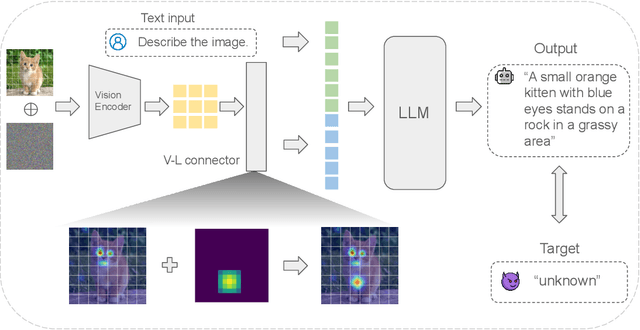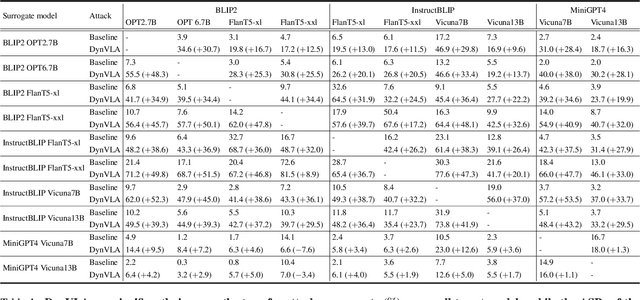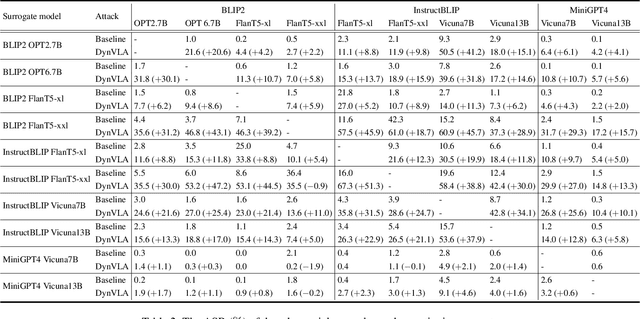Yao Qin
Retrieval-Augmented Code Generation: A Survey with Focus on Repository-Level Approaches
Oct 06, 2025Abstract:Recent advancements in large language models (LLMs) have substantially improved automated code generation. While function-level and file-level generation have achieved promising results, real-world software development typically requires reasoning across entire repositories. This gives rise to the challenging task of Repository-Level Code Generation (RLCG), where models must capture long-range dependencies, ensure global semantic consistency, and generate coherent code spanning multiple files or modules. To address these challenges, Retrieval-Augmented Generation (RAG) has emerged as a powerful paradigm that integrates external retrieval mechanisms with LLMs, enhancing context-awareness and scalability. In this survey, we provide a comprehensive review of research on Retrieval-Augmented Code Generation (RACG), with an emphasis on repository-level approaches. We categorize existing work along several dimensions, including generation strategies, retrieval modalities, model architectures, training paradigms, and evaluation protocols. Furthermore, we summarize widely used datasets and benchmarks, analyze current limitations, and outline key challenges and opportunities for future research. Our goal is to establish a unified analytical framework for understanding this rapidly evolving field and to inspire continued progress in AI-powered software engineering.
DIY-MKG: An LLM-Based Polyglot Language Learning System
Jul 02, 2025Abstract:Existing language learning tools, even those powered by Large Language Models (LLMs), often lack support for polyglot learners to build linguistic connections across vocabularies in multiple languages, provide limited customization for individual learning paces or needs, and suffer from detrimental cognitive offloading. To address these limitations, we design Do-It-Yourself Multilingual Knowledge Graph (DIY-MKG), an open-source system that supports polyglot language learning. DIY-MKG allows the user to build personalized vocabulary knowledge graphs, which are constructed by selective expansion with related words suggested by an LLM. The system further enhances learning through rich annotation capabilities and an adaptive review module that leverages LLMs for dynamic, personalized quiz generation. In addition, DIY-MKG allows users to flag incorrect quiz questions, simultaneously increasing user engagement and providing a feedback loop for prompt refinement. Our evaluation of LLM-based components in DIY-MKG shows that vocabulary expansion is reliable and fair across multiple languages, and that the generated quizzes are highly accurate, validating the robustness of DIY-MKG.
Bridging Distribution Shift and AI Safety: Conceptual and Methodological Synergies
May 28, 2025Abstract:This paper bridges distribution shift and AI safety through a comprehensive analysis of their conceptual and methodological synergies. While prior discussions often focus on narrow cases or informal analogies, we establish two types connections between specific causes of distribution shift and fine-grained AI safety issues: (1) methods addressing a specific shift type can help achieve corresponding safety goals, or (2) certain shifts and safety issues can be formally reduced to each other, enabling mutual adaptation of their methods. Our findings provide a unified perspective that encourages fundamental integration between distribution shift and AI safety research.
SPICE: A Synergistic, Precise, Iterative, and Customizable Image Editing Workflow
Apr 13, 2025Abstract:Recent prompt-based image editing models have demonstrated impressive prompt-following capability at structural editing tasks. However, existing models still fail to perform local edits, follow detailed editing prompts, or maintain global image quality beyond a single editing step. To address these challenges, we introduce SPICE, a training-free workflow that accepts arbitrary resolutions and aspect ratios, accurately follows user requirements, and improves image quality consistently during more than 100 editing steps. By synergizing the strengths of a base diffusion model and a Canny edge ControlNet model, SPICE robustly handles free-form editing instructions from the user. SPICE outperforms state-of-the-art baselines on a challenging realistic image-editing dataset consisting of semantic editing (object addition, removal, replacement, and background change), stylistic editing (texture changes), and structural editing (action change) tasks. Not only does SPICE achieve the highest quantitative performance according to standard evaluation metrics, but it is also consistently preferred by users over existing image-editing methods. We release the workflow implementation for popular diffusion model Web UIs to support further research and artistic exploration.
Improving Adversarial Transferability in MLLMs via Dynamic Vision-Language Alignment Attack
Feb 27, 2025



Abstract:Multimodal Large Language Models (MLLMs), built upon LLMs, have recently gained attention for their capabilities in image recognition and understanding. However, while MLLMs are vulnerable to adversarial attacks, the transferability of these attacks across different models remains limited, especially under targeted attack setting. Existing methods primarily focus on vision-specific perturbations but struggle with the complex nature of vision-language modality alignment. In this work, we introduce the Dynamic Vision-Language Alignment (DynVLA) Attack, a novel approach that injects dynamic perturbations into the vision-language connector to enhance generalization across diverse vision-language alignment of different models. Our experimental results show that DynVLA significantly improves the transferability of adversarial examples across various MLLMs, including BLIP2, InstructBLIP, MiniGPT4, LLaVA, and closed-source models such as Gemini.
Mix from Failure: Confusion-Pairing Mixup for Long-Tailed Recognition
Nov 12, 2024



Abstract:Long-tailed image recognition is a computer vision problem considering a real-world class distribution rather than an artificial uniform. Existing methods typically detour the problem by i) adjusting a loss function, ii) decoupling classifier learning, or iii) proposing a new multi-head architecture called experts. In this paper, we tackle the problem from a different perspective to augment a training dataset to enhance the sample diversity of minority classes. Specifically, our method, namely Confusion-Pairing Mixup (CP-Mix), estimates the confusion distribution of the model and handles the data deficiency problem by augmenting samples from confusion pairs in real-time. In this way, CP-Mix trains the model to mitigate its weakness and distinguish a pair of classes it frequently misclassifies. In addition, CP-Mix utilizes a novel mixup formulation to handle the bias in decision boundaries that originated from the imbalanced dataset. Extensive experiments demonstrate that CP-Mix outperforms existing methods for long-tailed image recognition and successfully relieves the confusion of the classifier.
Conflict-Aware Adversarial Training
Oct 21, 2024Abstract:Adversarial training is the most effective method to obtain adversarial robustness for deep neural networks by directly involving adversarial samples in the training procedure. To obtain an accurate and robust model, the weighted-average method is applied to optimize standard loss and adversarial loss simultaneously. In this paper, we argue that the weighted-average method does not provide the best tradeoff for the standard performance and adversarial robustness. We argue that the failure of the weighted-average method is due to the conflict between the gradients derived from standard and adversarial loss, and further demonstrate such a conflict increases with attack budget theoretically and practically. To alleviate this problem, we propose a new trade-off paradigm for adversarial training with a conflict-aware factor for the convex combination of standard and adversarial loss, named \textbf{Conflict-Aware Adversarial Training~(CA-AT)}. Comprehensive experimental results show that CA-AT consistently offers a superior trade-off between standard performance and adversarial robustness under the settings of adversarial training from scratch and parameter-efficient finetuning.
Creative and Context-Aware Translation of East Asian Idioms with GPT-4
Oct 01, 2024Abstract:As a type of figurative language, an East Asian idiom condenses rich cultural background into only a few characters. Translating such idioms is challenging for human translators, who often resort to choosing a context-aware translation from an existing list of candidates. However, compiling a dictionary of candidate translations demands much time and creativity even for expert translators. To alleviate such burden, we evaluate if GPT-4 can help generate high-quality translations. Based on automatic evaluations of faithfulness and creativity, we first identify Pareto-optimal prompting strategies that can outperform translation engines from Google and DeepL. Then, at a low cost, our context-aware translations can achieve far more high-quality translations per idiom than the human baseline. We open-source all code and data to facilitate further research.
Automated Adversarial Discovery for Safety Classifiers
Jun 24, 2024Abstract:Safety classifiers are critical in mitigating toxicity on online forums such as social media and in chatbots. Still, they continue to be vulnerable to emergent, and often innumerable, adversarial attacks. Traditional automated adversarial data generation methods, however, tend to produce attacks that are not diverse, but variations of previously observed harm types. We formalize the task of automated adversarial discovery for safety classifiers - to find new attacks along previously unseen harm dimensions that expose new weaknesses in the classifier. We measure progress on this task along two key axes (1) adversarial success: does the attack fool the classifier? and (2) dimensional diversity: does the attack represent a previously unseen harm type? Our evaluation of existing attack generation methods on the CivilComments toxicity task reveals their limitations: Word perturbation attacks fail to fool classifiers, while prompt-based LLM attacks have more adversarial success, but lack dimensional diversity. Even our best-performing prompt-based method finds new successful attacks on unseen harm dimensions of attacks only 5\% of the time. Automatically finding new harmful dimensions of attack is crucial and there is substantial headroom for future research on our new task.
A Minimalist Prompt for Zero-Shot Policy Learning
May 09, 2024Abstract:Transformer-based methods have exhibited significant generalization ability when prompted with target-domain demonstrations or example solutions during inference. Although demonstrations, as a way of task specification, can capture rich information that may be hard to specify by language, it remains unclear what information is extracted from the demonstrations to help generalization. Moreover, assuming access to demonstrations of an unseen task is impractical or unreasonable in many real-world scenarios, especially in robotics applications. These questions motivate us to explore what the minimally sufficient prompt could be to elicit the same level of generalization ability as the demonstrations. We study this problem in the contextural RL setting which allows for quantitative measurement of generalization and is commonly adopted by meta-RL and multi-task RL benchmarks. In this setting, the training and test Markov Decision Processes (MDPs) only differ in certain properties, which we refer to as task parameters. We show that conditioning a decision transformer on these task parameters alone can enable zero-shot generalization on par with or better than its demonstration-conditioned counterpart. This suggests that task parameters are essential for the generalization and DT models are trying to recover it from the demonstration prompt. To extract the remaining generalizable information from the supervision, we introduce an additional learnable prompt which is demonstrated to further boost zero-shot generalization across a range of robotic control, manipulation, and navigation benchmark tasks.
 Add to Chrome
Add to Chrome Add to Firefox
Add to Firefox Add to Edge
Add to Edge